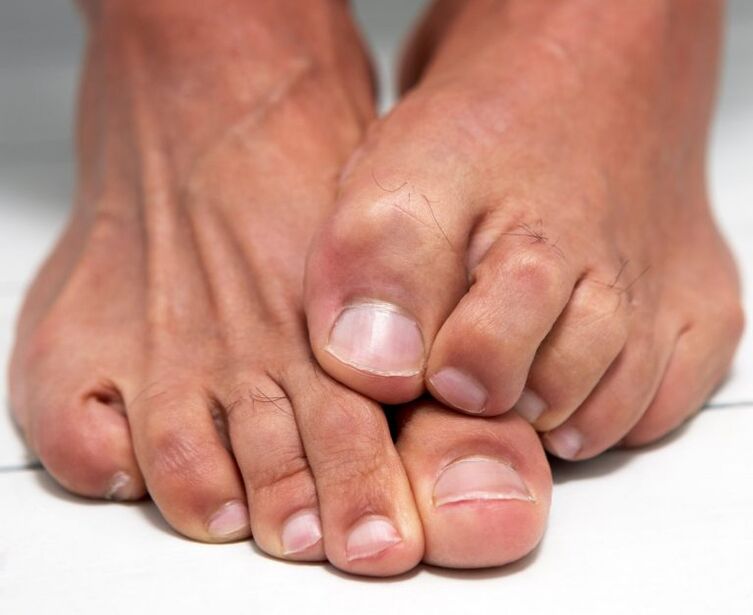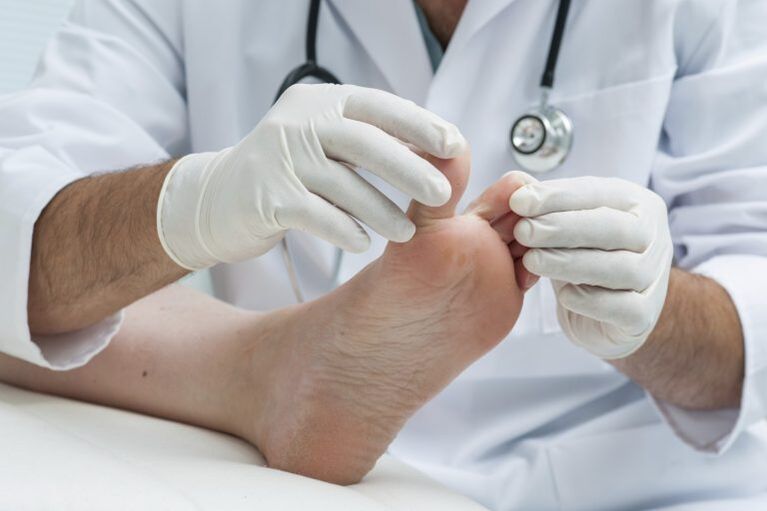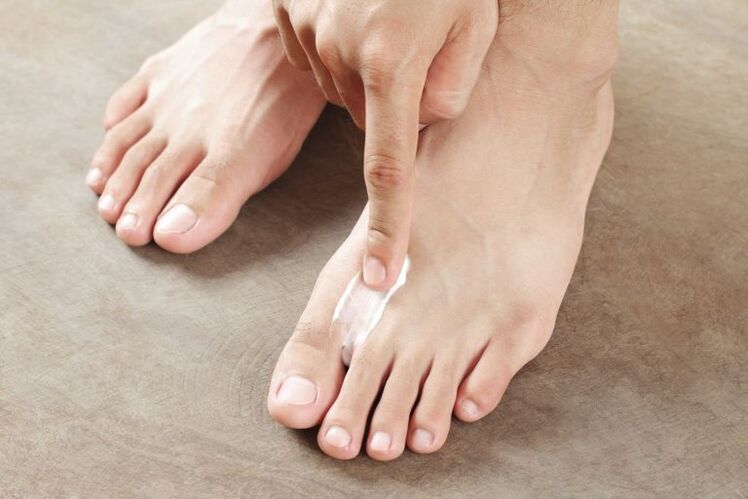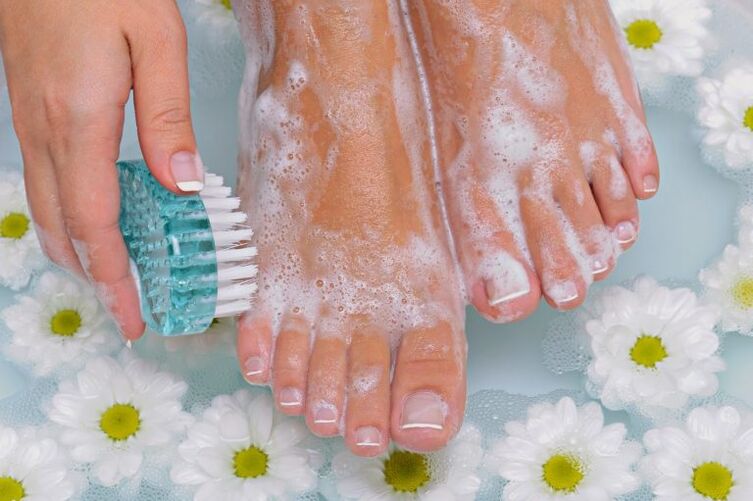The fungal damage to the legs begins from the areas between the fingers.Subsequently, the infection can spread to the feet and nail plates.The disease provoke dermatofitia, mold or yeast mushrooms.According to statistics in our country, about 20 % of people who have a fungus on their feet.The severity of the disease depends on the variety of infection, but in any case, the ailment needs to be cured, since peeling, severe itching, inflammation and unpleasant odor of the legs cause severe discomfort.We will tell you how to get rid of the fungus on the legs.

Symptoms of the fungus on the legs
To begin with, let's figure out what a fungus is.This is conditionally pathogenic microorganism, which in a small amount can live even on the skin of healthy people, but under favorable conditions begins to actively multiply. Signs of the fungus of the legs are directly related to the type of infection and the degree of involvement in the process of the skin and horn plates.So, with damage to the foot, mushrooms called trichophyton red, the following signs of the disease are present:
- The first symptoms of the fungus are usually noticed between the fingers.Moreover, at first the infection affects the denser folds-between the 3rd and 4th fingers.Then the ailment passes to the soles, the back and side surface of the feet.In addition, fungi can spread to nails and palms;
- In the future, the signs of the fungus are supplemented by dryness and thickening of the skin.The fungus of the skin of the legs contributes to the formation of characteristic grooves on it.When the ailment progresses, the stratum layer seals occurs, corns, cracks appear on the feet, painful sensations join;
- The fungus on the skin of the legs is manifested by a characteristic plate or bow of skin;
- Many patients are concerned about severe skin itching;
- Symptoms of the fungus on the legs can be weakly expressed with an erased form of the disease, which happens with exudative variants of the lesion.In this case, the soles on the feet can cover minor diaper rash, sometimes bubbles appear.With this form, superficial peeling and cracks between the fingers, like itching, are practically absent.Often patients do not pay attention to minor symptoms, so they do not turn to specialists;
- Another sign of the disease is Leuconychia, that is, the formation of stains and white stripes on the nail plates;
- With the progression of the ailment, a multiple lesion of horny formations occurs.

An interesting fact!Red trichophyte practically does not affect children.This is due to high -speed regeneration of nails and skin at this age.
The first signs of the fungus on the legs with the lesion of Trichophyton Interdigital are the following:
- Such forms of the foot fungus are localized between the 3rd and 4th fingers, on the side surface of the foot, its sole and on the fingers.
- Unlike the above fungal disease, this type of mushrooms causes pronounced inflammatory phenomena.The process is never hidden.
- The peeling of the skin is accompanied by exudative processes.
- Often, damage to the legs is replenished with allergic reactions with rashes on the lower leg, face, body.Photos of such lesions can often be found on the Web.
- At the same time, the nails are rarely affected.More often this is a single infection with the pathology of the nail plates only on the 1st and 5th fingers.
If you have a fungus of the legs, symptoms of damage by microorganisms of the genus Candidate are the following:
- The first manifestations of infection are swelling and hyperemia of the skin;
- The foci of affected areas of the skin are usually surrounded by a rim in the form of an epidermis that was separated;
- Along the periphery, small bubbles with serous fluid, as well as small pustules, can be detected from the damage.

Types of fungus on the legs
Signs of fungus on the legs may differ depending on the type of ailment:
- For the erased shape, a slight peeling in the folds between the fingers is characteristic.Cracks are small and superficial, so they do not cause discomfort to the patient.
- Squamous form is characterized by peeling of the side sections of the feet and interdigital gaps.With this form, the skin fungus on the legs does not cause inflammation.There is rarely slight hyperemia and itching.On the sole, the skin is like lacquer, due to the thickening of the stratum corneum.The skin pattern is reinforced, and peeling is possible in the folds.The patient does not feel discomfort.
- With Hyperkeratotic, you can notice bluish plaques and flat dry papules on the feet.In the central part of the rashes there are scaly layers.Around them, rudbles from the epithelium that separated.There are also small bubbles.Rashes can merge into large foci and hit the entire sole.These types of fungus are similar to signs of psoriasis.Discomfort causes moderate itching, dry skin and soreness of the feet.
- Interginate form is accompanied by Intertrigo between the fingers.The skin here is swollen, hyperemic and has weighing.This form is characterized by the development of deep and painful erosion.Patients are documented by severe itching, burning and soreness.
- The dyshidrotic form is characterized by the appearance of many bubbles with thickening in the upper part.The place of their localization is the arch of the foot.Intodanitz folds and soles can also be affected.After opening the bubbles, weeping reddish-pink erosions are formed.As the ailment develops, edema and hyperemia grow.Such types of fungi are very similar to eczema.

Fleet treatment
Treatment of the fungus of the legs at the initial stage is carried out using local drugs.There are about 20 dosage forms of these products.This includes ointments, gels, varnishes, sprays, powder, solutions, foams and creams.
These drugs have a wide effect, therefore, they cope with mushrooms of different types and reduce the likelihood of relapse.In addition, local products for the treatment of the fungus practically do not have toxic effects on the body.
It happens that the ailment has reached the stage when the patient cannot cure the patient with only local funds.In this case, the doctor prescribes antifungal systems of systemic action for oral consumption.
If we talk about how to cure the fungus on the legs with a total damage to the feet and nail plates, then a combined therapy consisting of the use of systemic antimycotics, antifungal medicines for local application and medical pedicure is shown here.

Fungus prevention
Now that you understand how to cure the fungus on your feet, it's time to talk about the prevention of this disease so that you no longer have to get rid of this ailment for a long time and painfully.
Among the preventive measures, the following can be called:
- With a decrease in metabolism, the deterioration of the intensity of blood circulation and the weakening of immunity, suitable conditions for infection with mushrooms are created.That is why it is recommended to compensate for diabetes, atherosclerosis, varicose veins, arthrosis, arthritis, flat feet, immunodeficiency, sweating and obesity.All of these diseases are considered indirect causes of fungal legs.
- Do not wear close uncomfortable shoes.The same applies to low -quality leatherette products.Shoes should be breathing, hygroscopic and comfortable.Once a month, it is recommended to carry out its preventive antifungal treatment using a special spray or aerosol.
- Avoid walking barefoot in public use.Carry out the disinfectant processing of your own bathroom, shower, flooring and toilet.
- Use only your own pedicure supplies, towels, socks and shoes.
- Drink vitamins regularly.Walk in the fresh air more often.Watch sports.
- Do not shoe in shoes if your legs are wet.
If one of the family members has a fungus, then it must be cured, since it can become a source of infection of other households.Once a month, carry out a pedicure and remove the coarse or dead skin, which is a favorite habitat of fungi.
















